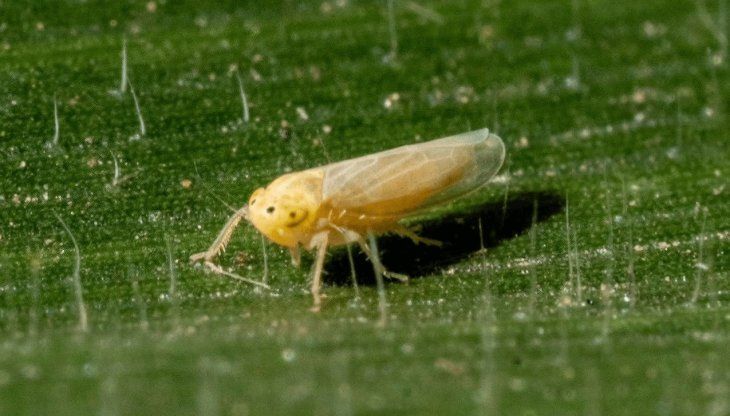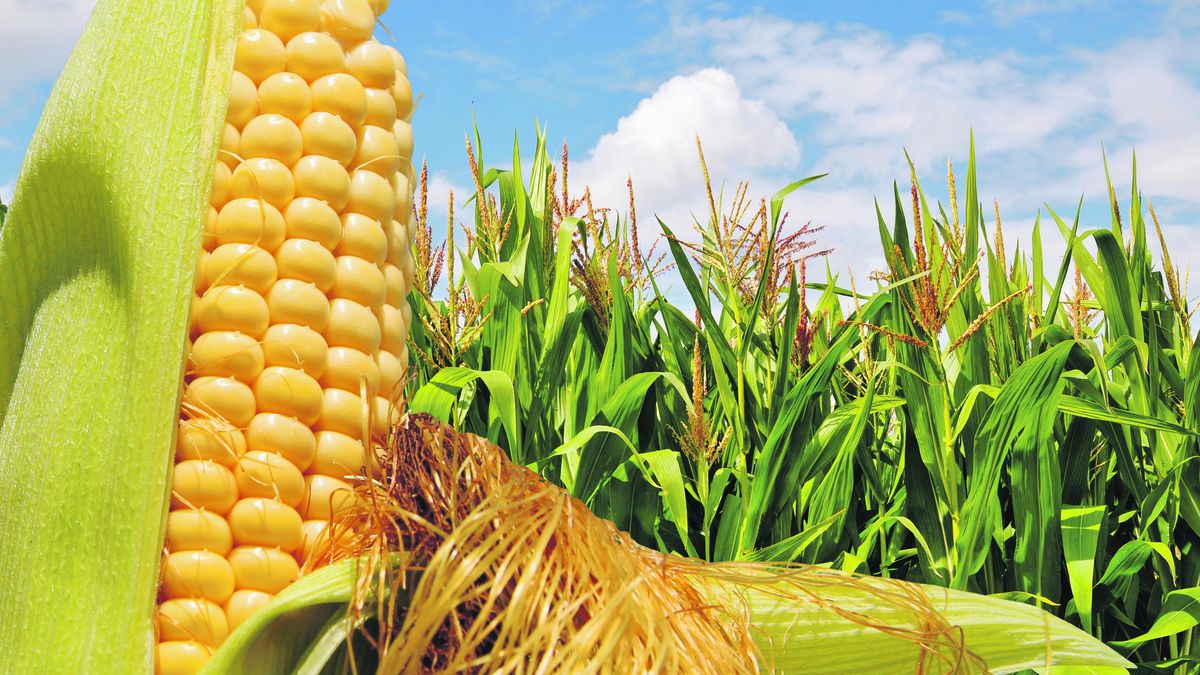The country, the third international exporter of corn, suffered cuts to its estimates for the 2023/24 season cereal harvest by millions of tonnes in a matter of weeks, due to the yellow insect that is a vector of diseases that affect crop productivity.
“The number of days with frost is becoming less frequent because global temperature is increasing,” said doctor in Atmospheric Sciences and specialist in climate change, Matilde Rusticucci.
“The temperature in our region is increasing. In particular, the year 2023 was declared the warmest year in history,” added the UBA professor emeritus.
Soy corn.jpg
Analysts have made dramatic cuts to their corn crop estimates.
This increase in the value of minimum temperatures allowed an unprecedented expansion of the leafhopper in Argentina, where it reached provinces in the center of the country, crossing the natural border that limited it to northern Argentina.
For this reason, analysts have made dramatic cuts in their estimates of the corn harvest, which the Buenos Aires Grain Exchange reduced by a total of 10 million tons in recent months, to 46.5 million tons, its latest estimate of production.
“We should be talking about a production of more than 60 million tons of corn and for this little cicada we are talking about 50.5,” said Cristina Russo, head of agricultural estimates at the Rosario Stock Exchange (BCR).
“We all suspect it’s going to be much worse than what we’re seeing,” he added. It’s a “big blow to corn.”
leafhopper-maiz-de-rossi.png

The little girl is barely 4 millimeters long.
According to Russoin In northern Argentina the number of leafhoppers has multiplied by ten and there are reports of the insect – which can fly long distances – up to almost 1,500 kilometers south of its traditional home, something unthinkable until recently due to the colder nature of the southern areas.
“You normally saw the leafhopper in the bud of the plant, you looked for it. This year you go to the field and you can find clouds of leafhopper, it’s crazy,” said Aníbal Córdoba, a producer from the province of Chaco, in the north. from the country.
“Many are going to reduce their hectares of corn to zero. If it doesn’t freeze hard in the winter we know that we are going to have a very high population because a lot of wheat is going to be planted,” a crop in which the insect resides during the winter, he added.
“This raises how Argentina is going to produce corn next year,” Russo said, agreeing with Córdoba’s analysis.
Government held meetings with specialists
In recent weeks, the Government held meetings with officials from different provinces and associations of agricultural producers, with the aim of coordinating the management and containment of the pest.
“All this will help us understand today and above all see the comprehensive action plan for the next campaign, knowing that neither a single product nor a single action will manage the leafhopper, but rather the vector must be manage it in a comprehensive manner,” said a source from the Bioeconomy Secretariat.
The source told Reuters that the state health agency Senasa in recent days authorized the use of three new insecticides to combat the insect.
“This is a real problem”
In many parts of Argentina, the number of days with frost has decreased, but in essential agricultural areas the decline is noticeable. Also in recent decades, minimum temperatures nationwide have risen and the number of cold nights has fallen.
A scientific study by specialists from Argentine universities and state institutes shows how since 1963 the average number of cold nights – an important climate indicator – has fallen from about 15 days per year to about eight in 2013. A mild winter last year It meant that more leafhoppers survived the cold months of the year, causing an explosion in their population in the first months of 2024.
“One of the most important causes of the increase in populations significantly was the decrease in the number of frosts throughout the country in the previous winter,” he said. Fernando Flores, entomologist at the National Institute of Agricultural Technology (INTA).
How climate affects the new pest
The leafhopper does not tolerate temperatures below four degrees Celsius, so until recently frost operated as a natural limitation on its population.
In the province of Cordovathe district that in the current campaign concentrates a third of the area dedicated to corn at the national level, grain losses due to leafhopper amount to 1.13 billion dollars, according to its grain exchange.
Data from the Córdoba observatory of the National Meteorological Service (SMN) show a decrease in the number of frosts over the years. “What was planted late towards the end of December, beginning of January, was where the greatest damage was seen, especially in spikes, with significant drops in yield,” explained Ramón García, a farmer from the Cordoba town of Marcos Juárez.
Meanwhile, the future prospects are not very encouraging. According to Rusticucci, the first quarter of 2024 was a record in terms of global maximum temperatures.
Michael Cordonnier, an analyst at the American consulting firm Soybean and Corn Advisor Inc., said that what happened with corn and leafhoppers in Argentina is so “strange” that it will take years for the country’s producers to adapt to the situation.
“This is a real problem. Looking forward, they will be able to solve this in a few years by getting hybrids that are more tolerant to the disease and authorizing more insecticides for this specific problem,” he said. “But at the moment it’s just terrible,” he closes.
By Maximilian Heath and Matias Baglietto, Reuters agency
Source: Ambito




